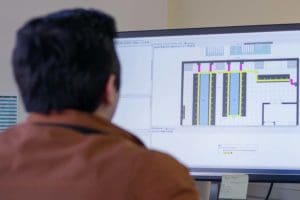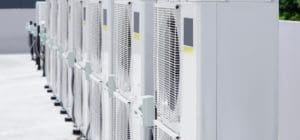Energy-efficient data centres are no longer a luxury but a necessity in today’s digitally driven world. Designed to optimise performance while dramatically reducing power consumption, EziBlank's innovative solutions, such as our cutting-edge blanking panels, are here to transform your infrastructure. By effectively managing air flow and energy usage, you'll not only boost operational efficiency but also make a positive impact on your bottom line. Embrace the future of data management and invest in sustainable performance with EziBlank today!
Designing an Energy-Efficient Data Center
Designing an energy-efficient data centre requires a strategic approach that combines advanced technology with best practices in layout and infrastructure management. The foundation of an energy-efficient design begins with optimising the physical layout, such as implementing hot and cold aisle containment to prevent the mixing of hot and cold air, which significantly reduces the burden on cooling systems. Incorporating energy-efficient hardware, such as servers and storage devices that consume less power, is also crucial. Additionally, leveraging renewable energy sources like solar or wind power can greatly reduce the carbon footprint of the facility. Effective monitoring and management tools are essential for tracking energy use and making real-time adjustments to improve efficiency. By focusing on these elements, a data centre can achieve optimal performance while minimising energy consumption and operational costs.
Read More
Green Data Center Case Study
A green data centre case study highlights how implementing sustainable practices can lead to significant environmental and financial benefits. In one example, a data centre achieved substantial energy savings by integrating renewable energy sources such as solar and wind power into its operations. Additionally, the facility utilised advanced cooling technologies, including free cooling and liquid cooling systems, which drastically reduced the reliance on traditional, energy-intensive air conditioning. The implementation of hot and cold aisle containment systems further optimised airflow, minimising energy waste. Through these initiatives, the data centre not only reduced its carbon footprint but also realised considerable cost savings, demonstrating that sustainability and efficiency can go hand in hand. This case study serves as a model for other facilities aiming to transition towards greener, more energy-efficient operations.
Read More
Best Practice Guide for an Energy Efficient Data Center
Creating an energy-efficient data centre involves implementing best practices that optimise performance while minimising energy consumption. Key strategies include effective airflow management, such as using blanking panels and hot/cold aisle containment to prevent the mixing of hot and cold air, thus reducing the load on cooling systems. Upgrading to energy-efficient hardware and utilising advanced cooling technologies like liquid or free cooling can significantly lower energy use. Regular monitoring and optimisation of power usage effectiveness (PUE) are also crucial, allowing for real-time adjustments that enhance efficiency. These practices not only reduce operational costs but also contribute to a more sustainable and environmentally friendly data centre.
Read More
